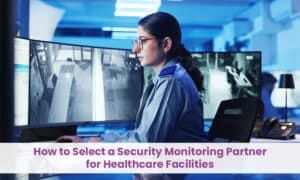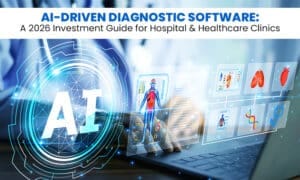
In today’s rapidly evolving healthcare landscape, Electronic Health Records (EHRs) have emerged as a cornerstone of modern medical practice. These digital versions of patients’ paper charts have revolutionised how healthcare providers collect, store, and utilise patient information, marking a significant departure from traditional paper-based systems.
Understanding Electronic Health Records
Electronic Health Records are comprehensive digital records that contain a patient’s entire medical history, including diagnoses, medications, treatment plans, immunisation dates, allergies, radiology images, and laboratory test results. Unlike traditional paper records, EHRs are real-time, patient-centred records that make information instantly and securely available to authorised users.
The Impact of EHR Implementation
To truly understand the transformative impact of EHRs, let’s examine how healthcare operations differ in hospitals with and without electronic health record systems:
Hospital Operations Without EHR:
- Documentation and Record-Keeping- Medical staff spend considerable time manually writing and updating patient records, leading to potential illegibility issues and increased chances of errors. Physical storage space requirements are substantial, and retrieving historical patient data can take hours or even days.
- Communication Between Departments Staff must physically transport paper records between departments, leading to delays in care delivery and increased risk of records being misplaced. Coordination between different healthcare providers requires multiple phone calls and faxes.
- Patient Care Management Healthcare providers lack immediate access to comprehensive patient histories, making it challenging to make well-informed decisions quickly. There’s an increased risk of duplicate tests and procedures due to incomplete information.
- Security and Privacy Paper records are vulnerable to physical damage, loss, and unauthorised access. Tracking who accessed patient records and when is nearly impossible, making HIPAA compliance more challenging.
- Cost and Resource Management Significant expenses are incurred in paper, printing, and physical storage. Staff productivity is reduced due to time spent on manual documentation and record retrieval.
- Lack of Interoperability (FHIR HL7) Data remains siloed, making it hard to share patient records across departments or facilities.
The Role of Interoperability in Healthcare | Patient Data Exchange
- Inability to Support Telehealth & Remote Patient Monitoring No integration for virtual consultations or remote monitoring, limiting patient access and engagement.
- Lack of UI & UX advancements: Manual processes lead to inefficiencies, errors, and a poor user experience for healthcare providers.
Hospital Operations With EHR:
- Documentation and Record-Keeping Healthcare providers can quickly input and access patient information through user-friendly interfaces. Records are clearly legible, standardised, and instantly accessible from any authorised terminal within the facility.
- Communication Between Departments Real-time sharing of patient information across departments enables seamless coordination of care. Instant notifications and alerts ensure critical information reaches the right healthcare providers immediately.
- Patient Care Management Comprehensive patient histories are available at the point of care, enabling better-informed clinical decisions. Built-in clinical decision support systems help prevent medical errors and suggest best practices.
- Security and Privacy Advanced encryption and access controls protect patient data. Detailed audit trails track all access to patient records, ensuring HIPAA compliance and accountability.
- Cost and Resource Management Reduced operational costs through the elimination of paper-based processes and storage. Improved staff productivity through streamlined workflows and automated processes.
- Enhanced Interoperability (FHIR HL7) Seamless data exchange between systems ensures better collaboration and continuity of care.
Step Ahead to The Digital World with FHIR Healthcare Interoperability Resources – Ezovion
- Telehealth & Remote Patient Monitoring Support Enables telehealth services and remote monitoring for better patient management and timely interventions.
- Advanced UI & UX for a modern, user-friendly interface streamlines workflows, improving efficiency and reducing administrative burdens.
Overview of Traditional vs. EHR-Based Healthcare Systems
| Aspect | Traditional System | EHR System |
| Documentation Speed | ⏳ 15-20 minutes per patient chart | ⚡ 5-7 minutes per patient chart |
| Record Access Time | 🔍 Minutes to hours | ⚡ In Seconds |
| Storage Requirements | 🗄️ Large physical space needed | 💾 Digital storage only |
| Error Rate | ⚠️ ~7% documentation errors | ✅ Less than 1% error rate |
| Cost per Patient Record/Year | 💰 $8-10 (paper, storage, staff time) | 💰 $2-3 (digital maintenance) |
| Information Sharing | 📂 Hours to days | ⚡ Instant |
| Security Features | 🔑 Basic lock and key | 🔒 Advanced encryption |
| Data Analytics | 📊 Manual and time-consuming | 🤖 Automated and real-time |
| Patient Access | ☎️ Phone calls required | 🌐 24/7 online portal |
| Disaster Recovery | 📄 Physical copies vulnerable | 💾 Automated backups |
| Infrastructure Cost | 💰 High (paper, storage rooms, physical servers) | 💻 Lower (cloud-based or on-premise digital setup) |
| Interoperability (FHIR HL7) | ❌ No standardised data exchange | ✅ Seamless data sharing with FHIR HL7 standards |
| Support for Telehealth & Remote Monitoring | ❌ Limited or unavailable | ✅ Enabled with real-time patient monitoring |
| UI & UX Facilities | 🛑 Outdated and complex interface | ✅ Intuitive, user-friendly, and automated |
Do check our post on the Advantages of electronic health records and Its Implementation
Benefits of Electronic Health Records
Enhanced Patient Care
EHRs significantly improve the quality of patient care by providing healthcare providers with complete, up-to-date patient information. This comprehensive view enables better-informed decisions and reduces the likelihood of medical errors. The system’s ability to flag potential drug interactions and allergies adds an extra layer of patient safety.
Improved Efficiency
By automating many routine tasks and eliminating the need for paper-based processes, EHRs dramatically increase operational efficiency. Healthcare providers can spend more time with patients instead of managing paperwork, leading to improved patient satisfaction and outcomes.
Better Coordination of Care
EHRs facilitate seamless communication between different healthcare providers, ensuring that all members of a patient’s care team have access to the same accurate, up-to-date information. This coordination is particularly crucial for patients with complex medical conditions who see multiple specialists.
Data Analytics and Research
The digitisation of health records creates unprecedented opportunities for medical research and population health management. Healthcare organisations can analyse large datasets to identify trends, improve treatment protocols, and advance medical knowledge.
Patient Engagement
Modern EHR systems often include patient portals that allow individuals to access their health records, schedule appointments, and communicate with their healthcare providers. This increased engagement helps patients take a more active role in managing their health.
Looking to the Future
As technology continues to advance, EHRs are evolving to incorporate artificial intelligence, machine learning, and predictive analytics. These innovations promise to further enhance the capability of healthcare providers to deliver high-quality, personalised care while improving operational efficiency.
The transition from paper-based records to EHRs represents more than just a technological upgrade – it’s a fundamental transformation in how healthcare is delivered and managed. While the initial implementation of EHR systems requires significant investment and organisational change, the long-term benefits in terms of improved patient care, reduced errors, enhanced security, and operational efficiency make it an essential evolution in modern healthcare.
As we move forward, continued development and refinement of EHR systems will play a crucial role in addressing healthcare challenges and improving patient outcomes. The future of healthcare is digital, and Electronic Health Records are leading the way in this transformation.





